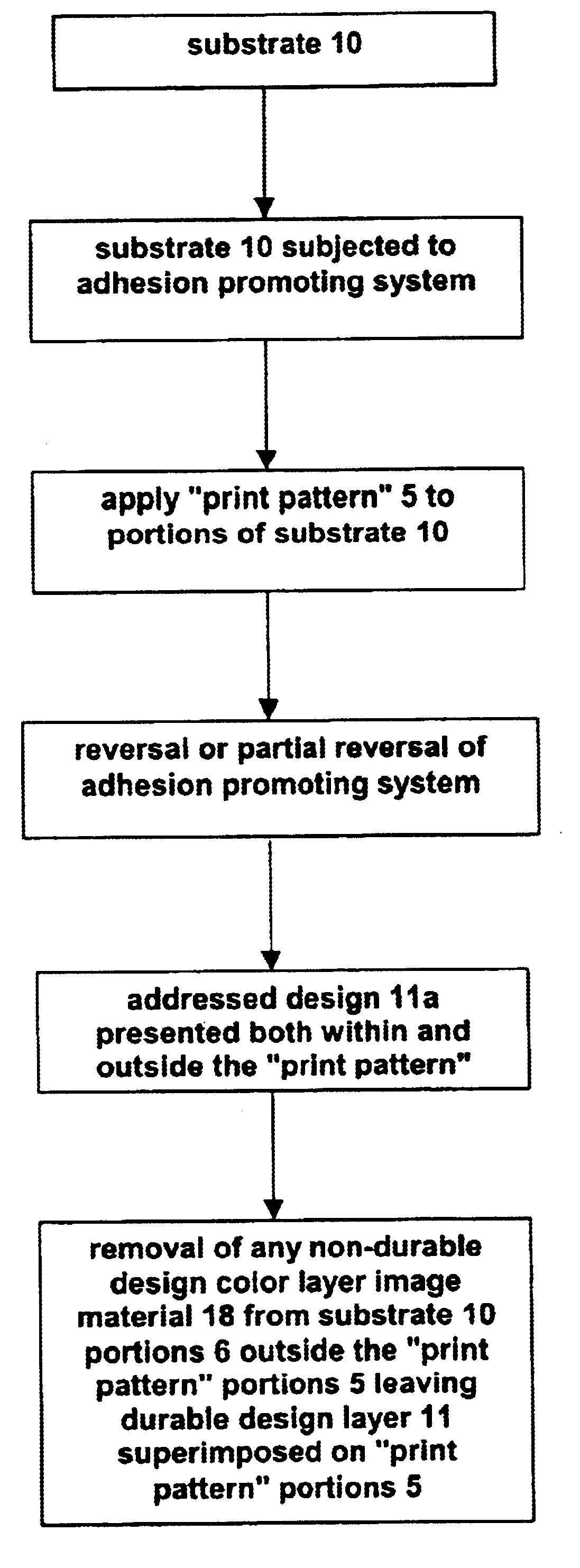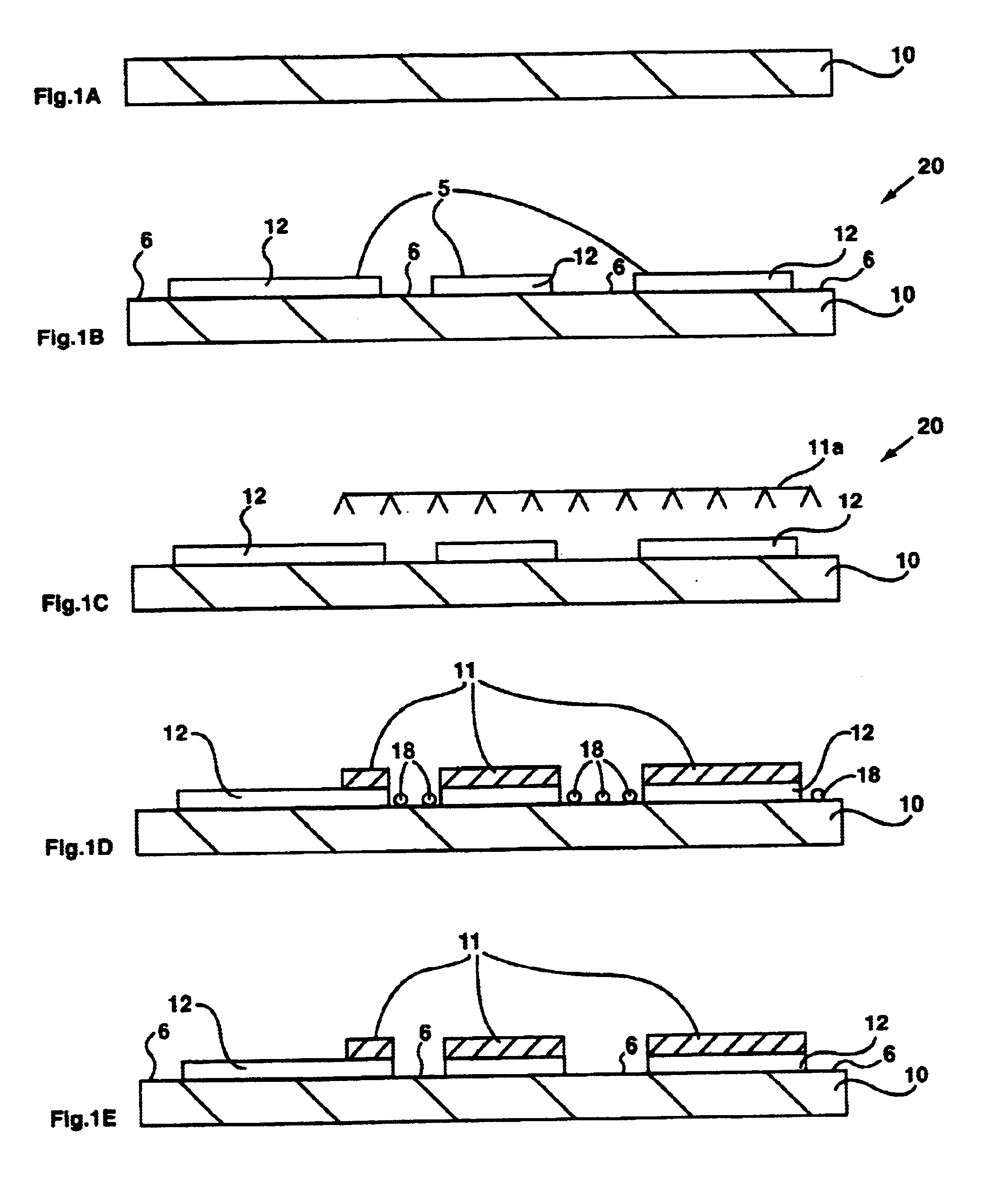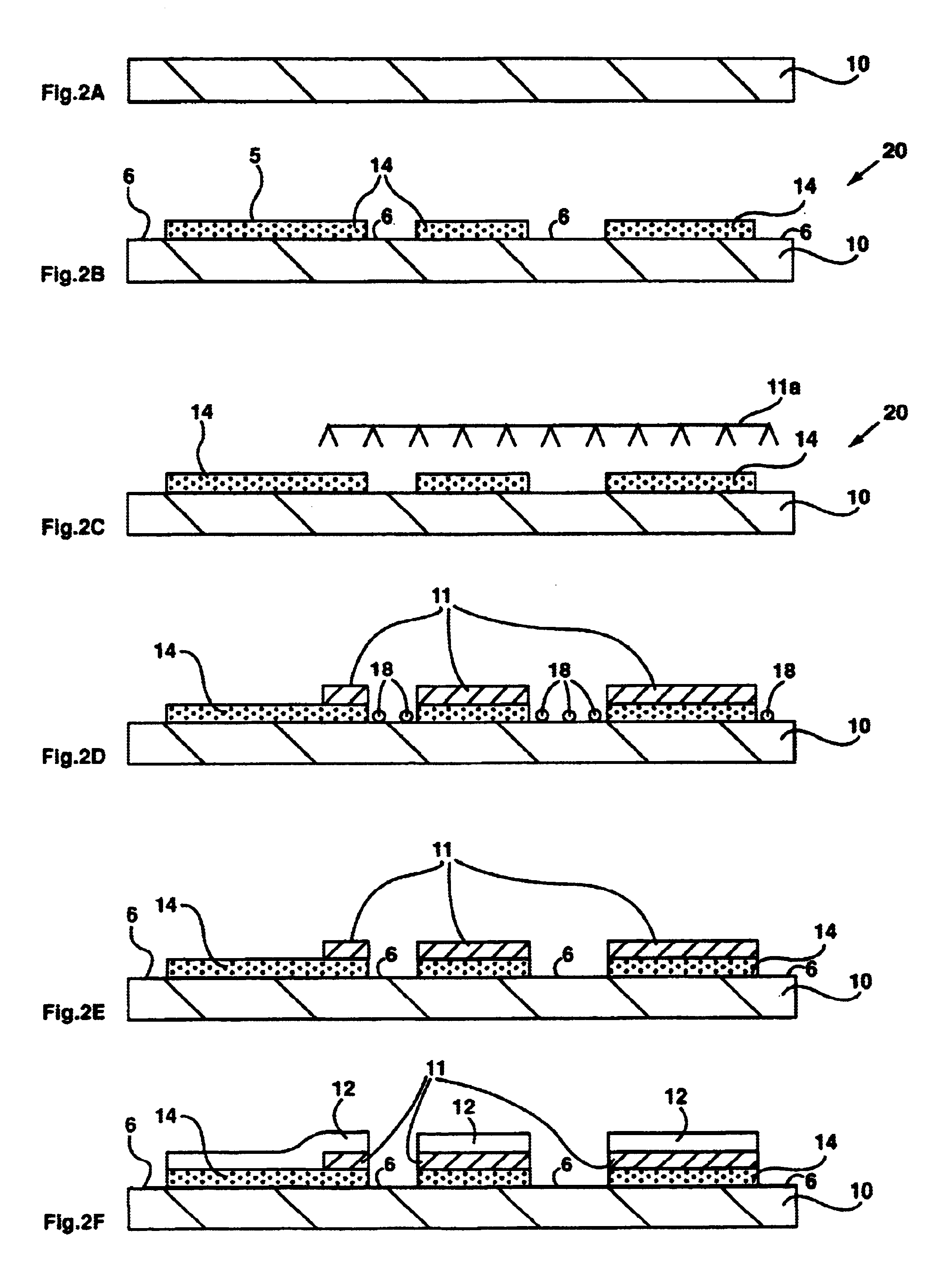Printing with differential adhesion
a technology of differential adhesion and printing, applied in the field of printing, can solve the problems of unsuitable uv-curing screenprinting ink for these methods, method does not utilize differential receptivity or differential adhesion or removal of unwanted ink, irregular fractures and inaccurate results, etc., to achieve the effect of facilitating subsequent removal of stripes, low surface energy, and easy removal
- Summary
- Abstract
- Description
- Claims
- Application Information
AI Technical Summary
Benefits of technology
Problems solved by technology
Method used
Image
Examples
Embodiment Construction
[0055]FIG. 1A illustrates substrate 10 to which print pattern 5 comprising image material 12 is applied, as illustrated in FIG. 1B, to form a patterned substrate. Substrate 10 may be any suitable material, for example, a polyester or polypropylene film. Image material 12 may be any suitable image material to which a UV-curable ink adheres, for example, a pvc solvent-based ink such as Coates VYNAGLAZE™, an ink manufactured by Coates Screen. The patterned substrate 20 has two outer edges and alternate printed portions 5 (forming the print pattern) and non-printed portions 6. As illustrated in FIG. 1C, the addressed design or design-generating medium 11a is then applied or addressed to the patterned substrate 20, the design-generating medium constituting UV-curable inkjet ink in this embodiment. The UV-curable inkjet ink is cured simultaneously with, or fractionally delayed by less than 1 second after, the impact of each ink deposit. As illustrated in FIG. 1D, upon UV curing, durable i...
PUM
| Property | Measurement | Unit |
|---|---|---|
| temperature | aaaaa | aaaaa |
| width | aaaaa | aaaaa |
| width | aaaaa | aaaaa |
Abstract
Description
Claims
Application Information
 Login to View More
Login to View More - R&D
- Intellectual Property
- Life Sciences
- Materials
- Tech Scout
- Unparalleled Data Quality
- Higher Quality Content
- 60% Fewer Hallucinations
Browse by: Latest US Patents, China's latest patents, Technical Efficacy Thesaurus, Application Domain, Technology Topic, Popular Technical Reports.
© 2025 PatSnap. All rights reserved.Legal|Privacy policy|Modern Slavery Act Transparency Statement|Sitemap|About US| Contact US: help@patsnap.com



